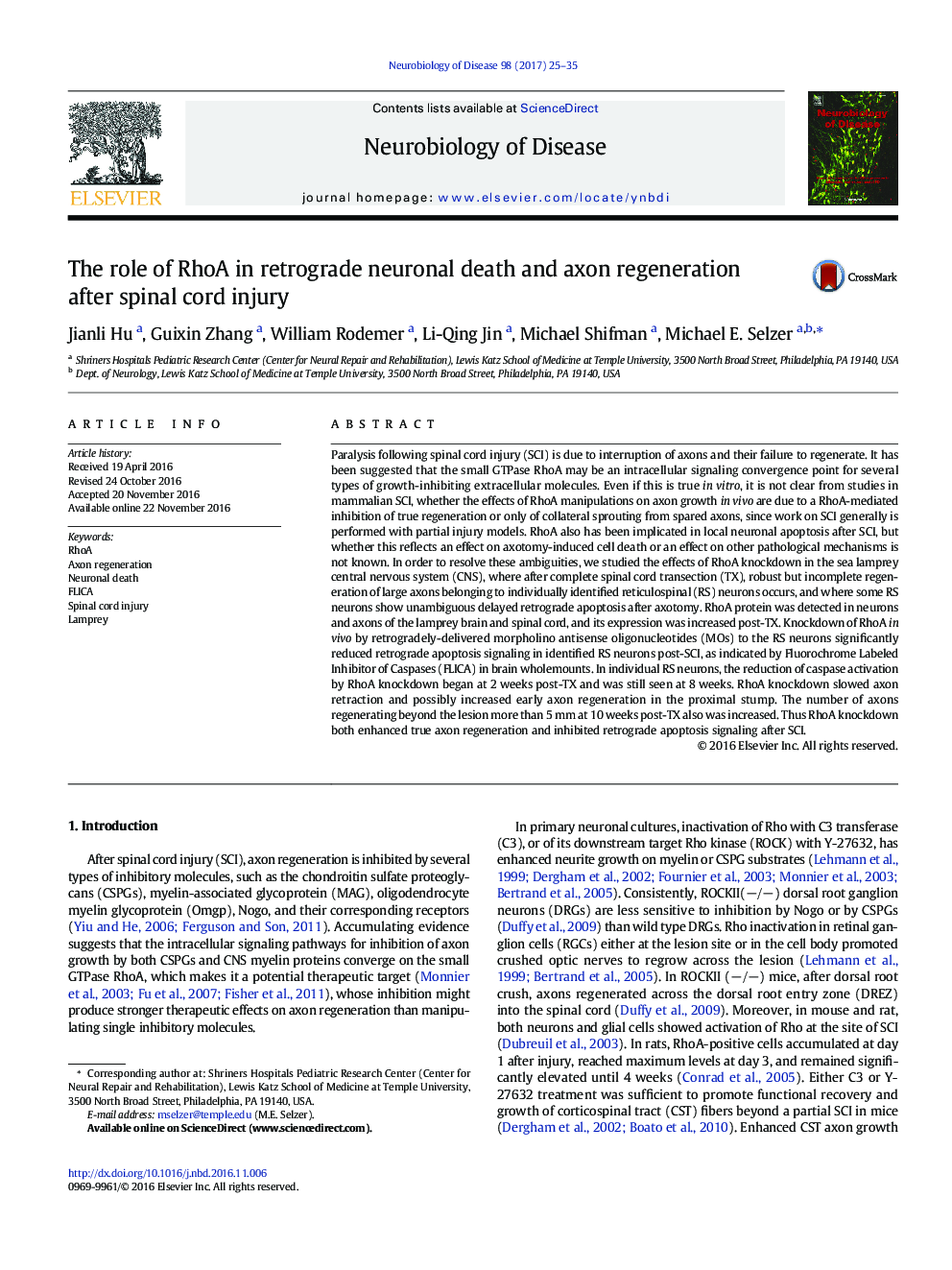| کد مقاله | کد نشریه | سال انتشار | مقاله انگلیسی | نسخه تمام متن |
|---|---|---|---|---|
| 5630699 | 1580623 | 2017 | 11 صفحه PDF | دانلود رایگان |
عنوان انگلیسی مقاله ISI
The role of RhoA in retrograde neuronal death and axon regeneration after spinal cord injury
دانلود مقاله + سفارش ترجمه
دانلود مقاله ISI انگلیسی
رایگان برای ایرانیان
کلمات کلیدی
موضوعات مرتبط
علوم زیستی و بیوفناوری
علم عصب شناسی
عصب شناسی
پیش نمایش صفحه اول مقاله

چکیده انگلیسی
Paralysis following spinal cord injury (SCI) is due to interruption of axons and their failure to regenerate. It has been suggested that the small GTPase RhoA may be an intracellular signaling convergence point for several types of growth-inhibiting extracellular molecules. Even if this is true in vitro, it is not clear from studies in mammalian SCI, whether the effects of RhoA manipulations on axon growth in vivo are due to a RhoA-mediated inhibition of true regeneration or only of collateral sprouting from spared axons, since work on SCI generally is performed with partial injury models. RhoA also has been implicated in local neuronal apoptosis after SCI, but whether this reflects an effect on axotomy-induced cell death or an effect on other pathological mechanisms is not known. In order to resolve these ambiguities, we studied the effects of RhoA knockdown in the sea lamprey central nervous system (CNS), where after complete spinal cord transection (TX), robust but incomplete regeneration of large axons belonging to individually identified reticulospinal (RS) neurons occurs, and where some RS neurons show unambiguous delayed retrograde apoptosis after axotomy. RhoA protein was detected in neurons and axons of the lamprey brain and spinal cord, and its expression was increased post-TX. Knockdown of RhoA in vivo by retrogradely-delivered morpholino antisense oligonucleotides (MOs) to the RS neurons significantly reduced retrograde apoptosis signaling in identified RS neurons post-SCI, as indicated by Fluorochrome Labeled Inhibitor of Caspases (FLICA) in brain wholemounts. In individual RS neurons, the reduction of caspase activation by RhoA knockdown began at 2Â weeks post-TX and was still seen at 8Â weeks. RhoA knockdown slowed axon retraction and possibly increased early axon regeneration in the proximal stump. The number of axons regenerating beyond the lesion more than 5Â mm at 10Â weeks post-TX also was increased. Thus RhoA knockdown both enhanced true axon regeneration and inhibited retrograde apoptosis signaling after SCI.
ناشر
Database: Elsevier - ScienceDirect (ساینس دایرکت)
Journal: Neurobiology of Disease - Volume 98, February 2017, Pages 25-35
Journal: Neurobiology of Disease - Volume 98, February 2017, Pages 25-35
نویسندگان
Jianli Hu, Guixin Zhang, William Rodemer, Li-Qing Jin, Michael Shifman, Michael E. Selzer,